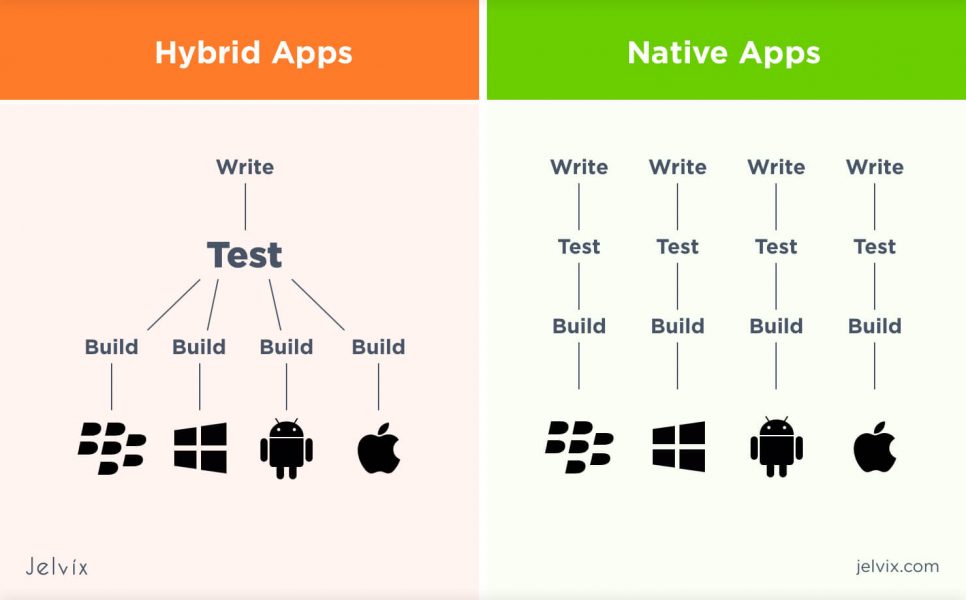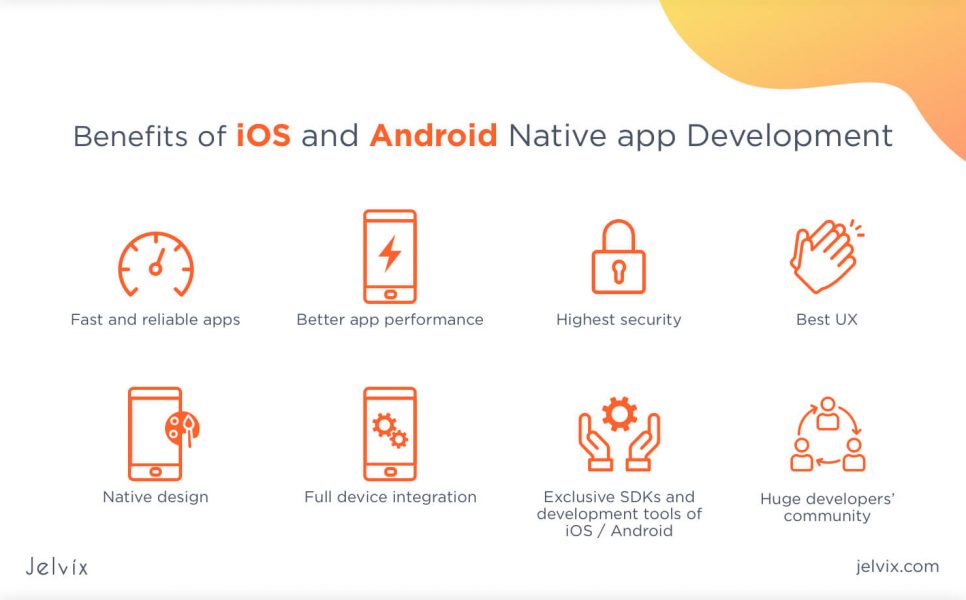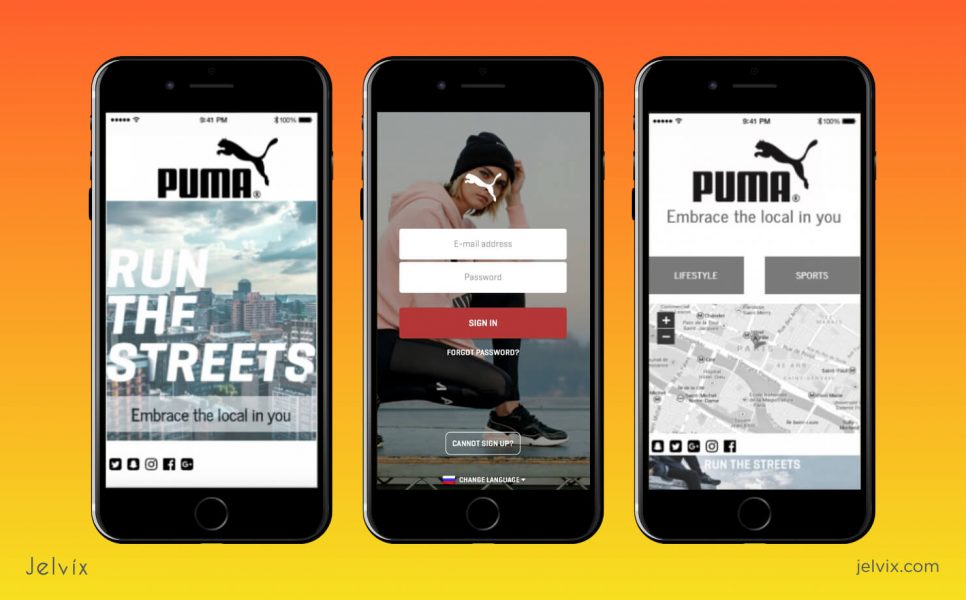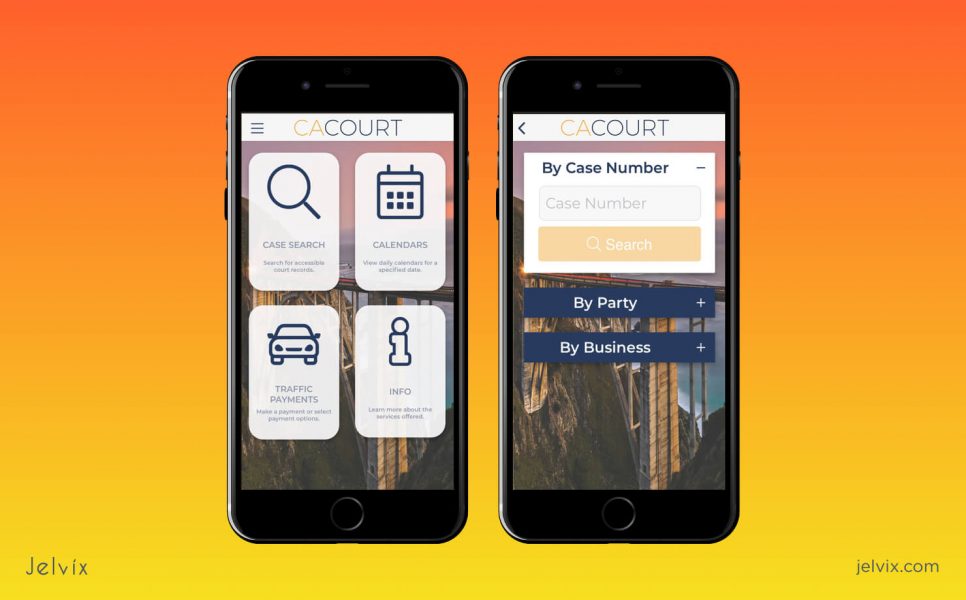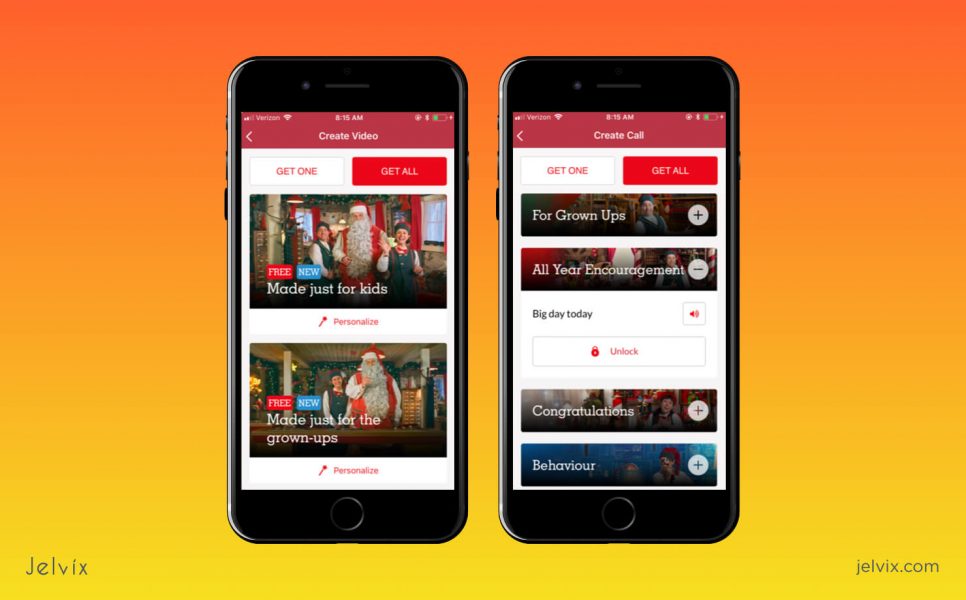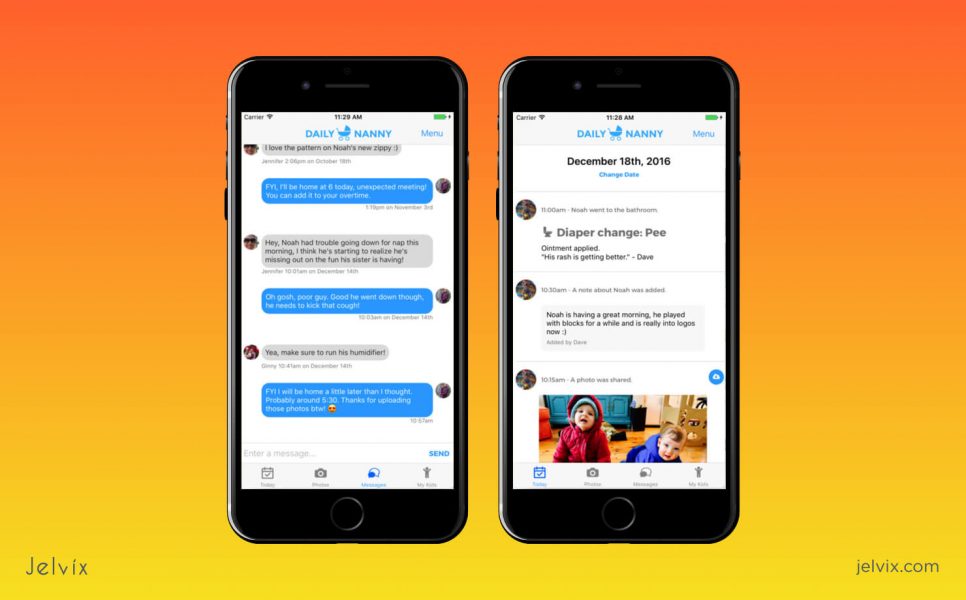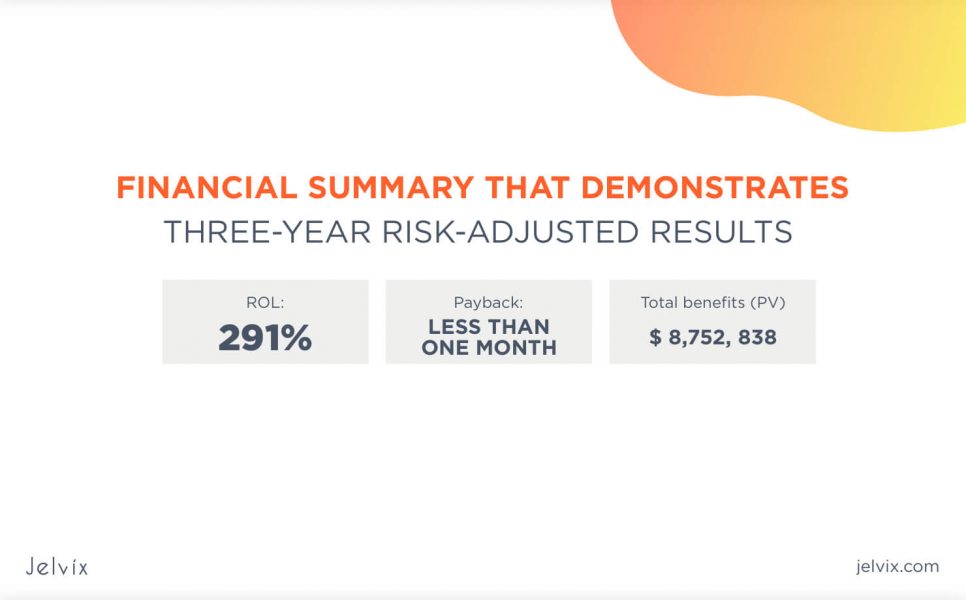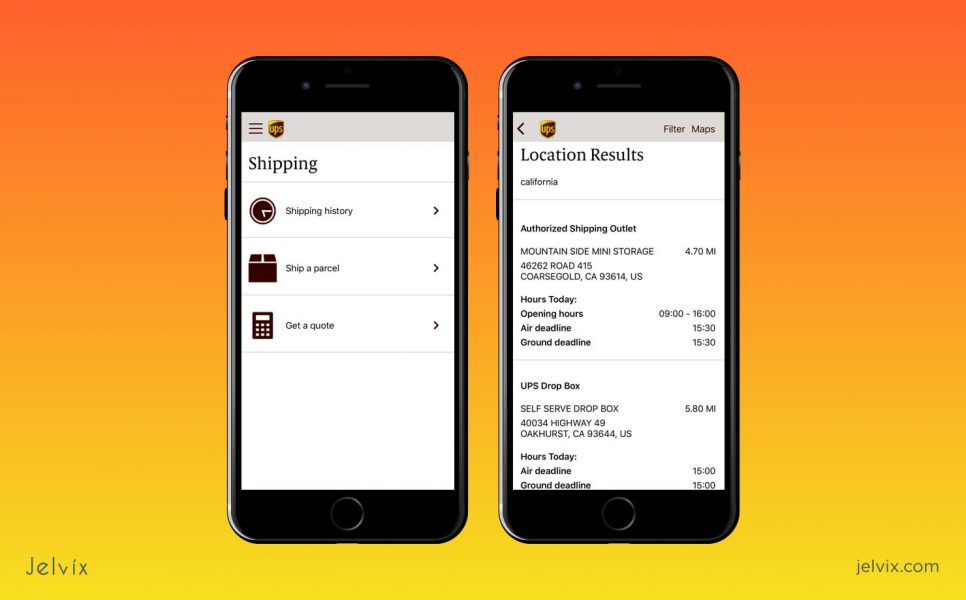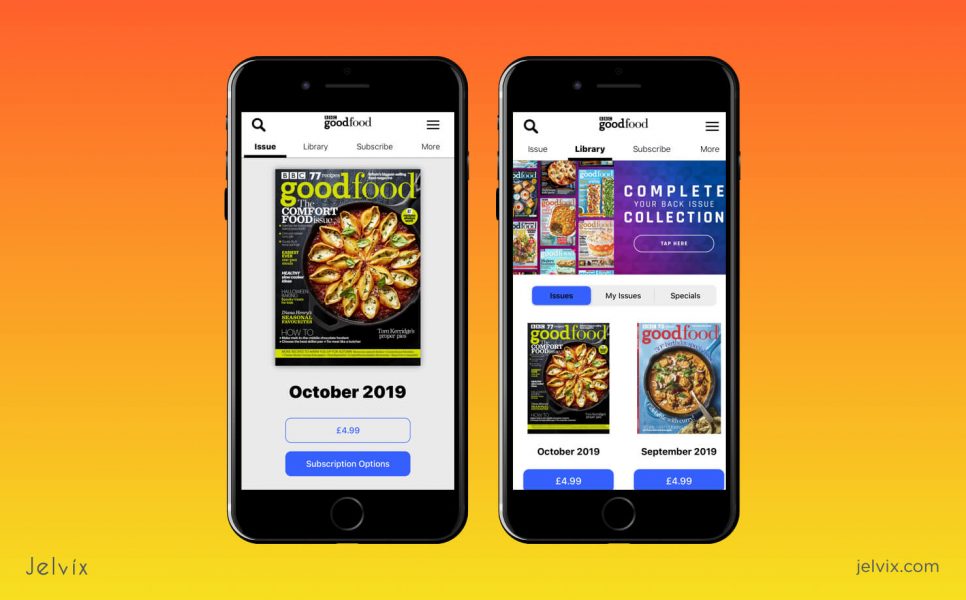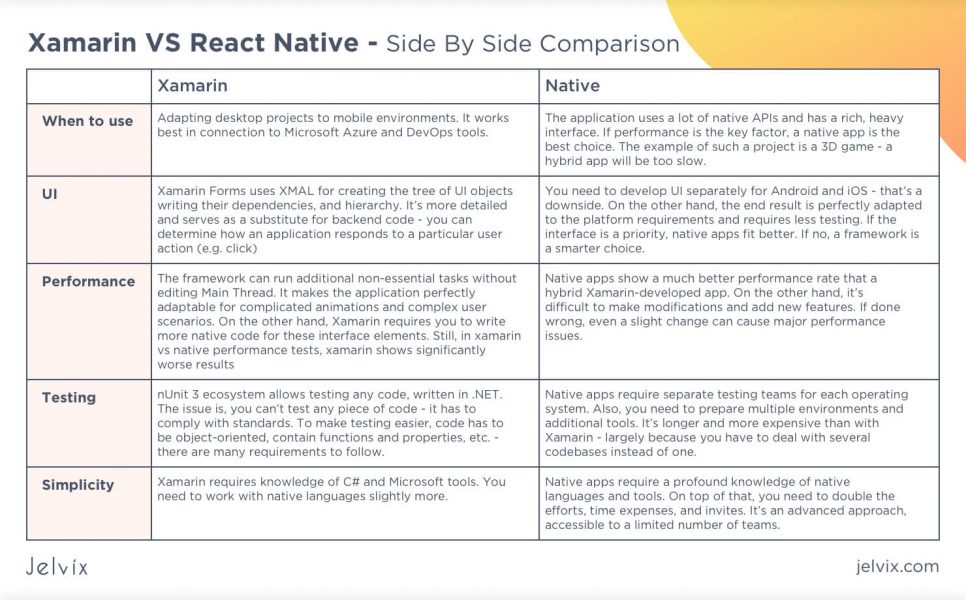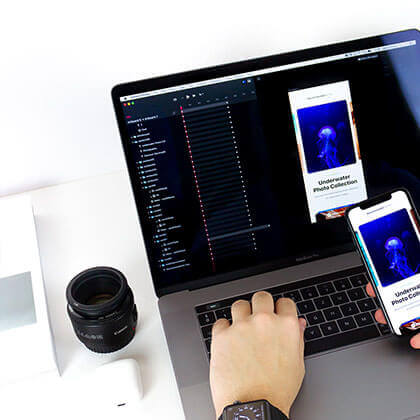Choosing between native and hybrid applications gets trickier with every year. Hybrid frameworks get closer to the native environment and functionality with each update, canceling out crucial native advantages. On the other hand, Apple and Google issue new, stricter requirements to their App Stores, forcing developers to implement more native elements.
To settle this debate, we compare a popular hybrid framework, developed by Microsoft, Xamarin vs native app development. We will examine the advantages and drawbacks of each approach, analyze case studies, and draw the final comparison. The goal is to help choose what fits your project best – and give insights on how to determine this compatibility.
Native app development
Native apps are developed specifically with regard to the operating system. They have direct access to the device’s camera and microphone, correspond to technical requirements of Android or iOS, and deliver a unique feel, expected from a particular platform.
Naturally, these apps are more difficult to develop and more expensive, although a lot of companies choose this road for making an app for a single operating system. If you envision the application to be available only on Android or iOs, choosing native development is an understandable strategy.
Native App Development Benefits
For many development companies, native development ends up being worth the struggle. It wins Xamarin or native debate by many points, primarily by offering a faster and more personalized user experience.
- Better performance
Native apps don’t require intermediate software to enable native APIs. You don’t need to install additional plugins, web views, integrate the project to multiple other platforms. This direct connection between the application and its API drastically increases speed and power. For games and 3D apps, native development is often the only choice – hybrid frameworks are too slow. - Consistent look and feel
The interface of a native development application is designed in response to the particular system standards. SDK, used in native languages, is compatible with the hardware characteristics. Ultimately, the interface requires less testing and looks much better on the device. - Immediate access to new features
Native applications get updates in sync with the latest Android and iOS features. Hybrid applications are held back by the lack of a particular plugin that supports a new feature – native apps can connect to a new API as soon as possible. - App store compliance
Native apps correspond to app store standards by default. Considering that App Store requirements became much stricter two years ago, a lot of developers were forced to revisit their functionality – native apps were updated automatically. Now Apple rejects software that uses too many Web Views – the sin of many React Native developers – and native developers are lucky to avoid these struggles.
Tools for native Android development
Android native apps require the knowledge of C++, Kotlin, or Java. Google assists developers with native development platforms and kits:
- Android studio and Integrated Development Environment integrated with Android Software Development Kit;
- Command line managers and simulators for desktop developers on Mac, Linux, and Windows;
- Firebase – a native Android development environment;
- Android Jetpack – a library with ready Android UX components.
Breaking a tie between Xamarin vs Android Studio is not an easy task. Both tools are simple and relatively cheap. Both have their drawbacks and advantages – Android studio is perfectly adapted to the hardware while Xamarin can be easily ported to iOS.
Native app development for iOS
Native iOS apps require the knowledge of Swift and Objective-C. iOS has specific code requirements, adapted to Apple hardware. Hence, if you want to create a native iOS app, you need to get a Mac first.
Apple offers developers and testers a lot of custom tools and resources – our favorite are the following ones:
- iOS SDK with a built-in UI framework;
- XCode, the integrated development environment for iOS;
- Swift playgrounds – a dedicated tool for Swift development learning;
- TestFlight – Apple’s official app for beta-testing;
- AppCode and CodeRunner – the software for code checks and garbage collections.
To determine what is better – Xamarin vs Swift – you need to familiarize yourself with official App Store requirements. If you can satisfy them with the hybrid app, a framework is a wiser solution, at least for its cost-efficiency.
Disadvantages of native app development
Even though native apps provide the best experience in terms of interface and speed, there are a lot of drawbacks that come with the platform-specific development approach. Let’s take a look at the main disadvantages of native apps.
1. Limited adaptability
If you decide to develop your app on iOS and Android simultaneously, you need to write two separate codebases. This requires two development and testing teams as well as two sets of technology. Whenever you need to introduce a new feature, you have to start two projects and keep track of each of them. This is why native developers end up being the ones who slower react to the innovations in Xamarin vs native mobile development competition. When your competitors write a single codebase in one framework, you need to double the efforts and expenses.
2. Consuming Maintenance and Development
The more your application grows, the harder it is to maintain the project. You need to keep up with multiple test scenarios, record results, monitor statistics, keep track of numerous APIs integrations. You will be maintaining two apps instead of one regularly. This means you’d have to invest twice as much time for debugging, the debt management, user monitoring, analytics.
You’ll have to think twice before making any change – it will take a lot of money and time to implement. For a $25, 000 native app, be ready to invest at least $5000 for maintenance. Keep in mind that these are regular expenses, and they will grow as the business scales.
3. Constant updates
Developers need to submit an updated code version each time a new bug was fixed – only this way, users will be able to get a new version. On the other hand, not all users agree to update their applications – you have no control over your feature delivery. This is bad news for customer base maintenance – users might stand in the way of your business growth and development.
Native app development case studies
Due to these crucial drawbacks of native app development, software development companies and in-house teams prefer to choose hybrid frameworks that allow maintaining a single codebase for iOS and Android. Still, there are companies that aim only at a single operating system as well as those who prioritize performance over costs. Let’s take a look at some native applications.
1. Building an online store – Puma
It’s a native wholesale app that manages the PUMA online store and connects users to the company’s projects. The functionality is focused on enabling new collections, creating and refilling a personal store, managing promo codes, and having favorite products.
The app can hardly be defined as multifunctional – all features revolve around a minimalistic store. However, the application is graphically heavy – the solution has to upload multiple images and quickly offer new media content. The loading speed here is the critical satisfaction factor – and native apps offer the best performance rate.
On the other hand, the application hardly needs to be updated frequently, except for new content uploads. The interface and functionality don’t require regular modifications – so the maintenance issue is slightly less pressing.
2. Processing legal requests – California Court Access App
The application handles hearing data, allowing users to search cases, pay traffic tickets, get GPS directions, and learn more about the court’s news. It is designed to connect the local community to legal news and court updates, serving both as a management tool and increasing the court’s public reputation.
The application requires the use of hardware functionality. To send a reminder, the application is connected to the phone’s SMS storage and email tool. “Calendars’ feature allows to integrate court’s schedule into a personal planner – hence, again a connection to a custom API. Last but not least, the application requires access to GPS and user location data – this enables the Court Access App to send directions.
Also, the application works with payment APIs. The user can connect to a bank and send a payment or receive transfer history. The app is based on integration with custom APIs, so there was no need even to doubt whether to use Xamarin or native.
3. Enabling media transfer – Snapchat
Snapchat needs direct access to users’ cameras and microphones. Considering that the application has to enable real-time video recording and streaming, as well as receive prompt access to users’ GPS data.
4. Building a personalized Santa message – Portable North Pole
The application creates a personalized Santa message to users’ families and friends. It handles thousands of videos regularly – so far, the view count has gove over 160 million views.
It also requires fast direct access to the camera. With a hybrid framework, this is harder to achieve – the application needs a specialized plug-in. By accessing the camera directly, the app allows recording a video, uploads photos, and add voice memos.
5. Creating a marketplace for nannies – Daily Nanny
This application manages nannies’ workflow and enables nannies to connect to families. The application combines the feature of a management app and a marketplace. Nannies can mark their shifts, calculate their time, and count their revenue. The software records shift history and shares these data with kid’s parents.
This native app handles photo uploads and comments – this way, a nanny can quickly report on her work. A photo-sharing feature sends the media content automatically to all users with access.
The app also has direct access to push-notifications, timer, messengers. It’s an aggregation of built-in phone features and exclusive add-ons. The app creators took the most out of hardware capacities and managed to fit it in a creative business model.
Xamarin hybrid app development
Xamarin is one of the most straightforward mobile development frameworks since it only requires basic Java and C/Swift skills. Xamarin is mostly used for UI/UX design, frontend, and backend development. It’s a favorite startup framework – Xamarin perfectly fits the needs of MVP developers.
The framework works with Microsoft’s Visual studio. It supports simulators and storyboards for iOS, Mac, and Android, fully recreating the required environment. In this Xamarin review, we take a look at basic functionality, but we’ll also mention additional possibilities.
Functionality of Xamarin
Xamarin is built on the C# compiler and NET environments. There are two Xamarin frameworks for mobile app development – for Android and iOS. They differ by the complication algorithms – iOS Xamarin compiles code directly into native ARM without using Intermediate Language (IL). Android Xamarin, on the other hand, firstly compiled the code to IL and then processed it to the native assembly code.
Android and iOS versions are similar in regards to their additional functionality. Both handle garbage collection, memory management, and code interoperability.
Additional features
- Xamarin Forms – other services for mobile app prototyping and code sharing, supports iOS and Android.
- Xamarin Mac – a development framework for Mac OS with a built-in compiler and garbage collector.
- An adapted SDK for iOS, called Cocoa Touch, and Android SDK, built with C#.
Let’s take a look at the pros and cons of Xamarin by taking a closer look at its functionality.
- Cross-platform development. Xamarin allows engineers to develop the application with a specific platform code – like Swift on iOS – and develop OS-specific features from the very first development stages. On the other hand, you can also choose to work in a stable environment that will later be compiled to the platform-specific code. It’s comfortable if you want the app to be supported both by iOS and Android. You write the code first, then adapt and test it.
- Additional service integration. Xamarin development supports platform-specific modules for Google Analytics, PayPal, Google Pay, and other services. If you want the end application to support a particular API, you can add it to the project early on.
- Smartwatch support. Xamarin integrated Visual Studio for Mac and Windows for Apple Watch app development. Similarly, the framework supports Android Wear for Android smartwatch development.
- Windows-based project environment. The framework is designed to work paired with Windows Visual Studio. Microsoft Azure tools are easily integrated into the workflow – you can build, design, debug, and maintain at the same time. For iOS and Mac OS project, Xamarin includes an iOS simulator and a design tool. Developers and designers can fully emulate Mac and iOS functionality and code environment on their Windows PCs.
Xamarin pros for hybrid app development
Rich functionality and additional high-end features make Xamarin one of the best hybrid frameworks out there. Let’s see what a development team wins from opting in favor of a unified development approach, as opposed to the platform-specific strategy.
- The majority of mobile app functionality is written in C# with a NET layer for APIs;
- Xamarin Forms enable fast prototyping with built-in UI libraries, adapted both to Android and iOS;
- Rich access to native APIs – just like in native apps, you can get access to the user’s Bluetooth, camera, microphone.
- Features that use these API can be written in a specific language for faster performance.
- Costs and time expenses are reduced twice – the team writes a single codebase for Android and iOS.
- Simple maintenance – Xamarin allows changing only a particular piece of functionality without affecting the entire software.
Unlike native apps, Xamarin doesn’t force you to choose a dominant operating system. Firstly, the team can write a general functionality without being system-specific. As 95% of the project is complete, you can move on to writing Android and iOS features that require a direct API connection.
Cons of Xamarin mobile development
Xamarin is not a perfect fix. As with any simple solution, the framework has its limitations, especially when it comes to massive and demanding projects.
- Entreprise use is expensive. Individuals and small teams can freely use Xamarin, but improved versions of Visual Studio and Azure DevOps require $2, 999 for an annual subscription. If your team grows, so does the membership cost.
- No support of Android and iOS Open Source libraries.
- Xamarin performance is slow in processing heavy UI/UX. The only solution is to implement interface natively and connect it to the hybrid functionality code.
When a team opts in favor of Xamarin, they don’t just choose a single framework, but the entire development system. Xamarin is used with Microsoft Azure, DevOps, and Visual Studio, so you need to check if these tools fit your project and team.
Xamarin case studies
To get a closer look at potential Xamarin usage, let’s examine the real cases and see how companies adopted the framework for their mobile development.
1. Many platforms, one language – UPS
This international postal service delivers $19 million packages every day to 22 countries. To make order monitoring and management easier both for the management team and end clients, UPS needed to develop a fast, cross-platform, and scalable app.
UPS used Xamarin to unite its two-platform app under a single development language and platform. After careful monitoring, engineers chose Xamarin and Visual Studio Tools. It was the only platform that allowed sharing C# code across devices and operating systems and creating native experiences for Android and iOS in a single environment.
To choose between Xamarin performance vs native development, the team has analyzed the code available for reuse. They also examined how much the existing frameworks allow them to keep as much of the old work as possible. Over the years, the team has written 130, 000 lines of code – preserving these was a key priority. Also, they liked the platform integration – as we mentioned. Xamarin integrates with unique hardware and takes care of small OS-specific features – sensory input, contact management, notification features.
Ultimately, the use of Xamarin helped UPS to avoid the hassle of doubling 130, 000 lines of code, and writing two functionality versions for each OS. Now, their developers work in the united environment, comply code to the native platforms, and write natively only 5-10% of platform-specific features.
2. Sharing C# codebase – BBC Good Food
BBC Good Food, one of the independent brands of the world-known broadcasting company, specializes in delivering online species in text, image, and video content. When the company switched from a desktop service to a mobile app, they needed to adapt the solution to Android and iOS.
The team chose Xamarin and Visual Studio for cross-platform development. They also used Universal Windows Platform for app release – all these Windows programs are automatically integrated with Xamarin. The team united all their code in one platform and developed a single feature set in less than 12 weeks, releasing Android and iOS versions in mere three months. Xamarin enabled writing one codebase for three base – for small teams who need to focus on growth and customer attraction, it’s a crucial advantage.
3. Processing multiple requests – Olo
Olo, a restaurant service provider, had a goal to make a cross-platform mobile app that would deliver a particular experience that users of a specific OS expect. In the team’s understanding, a native app is the one that feels as if it was created specifically for the platform – and not simply adapted.
Solving this task practically is an ambitious goal – you have to find a perfect balance between Xamarin vs native android codebase and adapt features to the platform’s unique technical requirements.
Olo solved this challenge with Xamarin. The built-in library with iOS and Android native APIs saved developers a lot of time. On top of that, the team remarks detailed framework documentation and educational video services – learning Xamarin is not a problem for newcomers.
4. Integrating Xamarin with Microsoft development tools – FOX Sports
FOX Sports is a personalized sports feed that delivers instant updates for millions of its users. The mobile app has to process thousands of data feeds, connecting more than 20 data storage. The ability to quickly process and transfer information was the critical need of the team.
Ultimately, FOX Sports combined Visual Studio and Xamarin for cross-platform development, Xamarin Test Cloud for UI design, and HockeyApp for future maintenance. The company had a skilled C# development team, and transferring the same language to mobile environments was a convenient choice. On top of that, the possibility to share code across Android, iOS, and Mac devices and pre-written NET packages helped a team to finish the project quickly.
5. Building an MVP – American Cancer Society
The American Cancer Society uses its app to communicate with volunteers and raise funding. It was a basic mobile application for iOS and Android that, despite its simplicity, performed its essential features flawlessly.
The team incorporated Xamarin, NET, Core, and Azure Development Services into their DevOps workflow. For the American Cancer Society, Xamarin and Microsoft DevOps services were the key driver to incorporating DEV Ops functionality.
Check out software development methodologies useful tips for the long life of your mobile application.
Xamarin vs React Native – side by side comparison
We’ve reviewed Xamarin vs native app development and their differences. Now it’s time to put these approaches together to see their strong and weak sides in comparison.
Conclusion
When you are choosing between native mobile development vs Xamarin, there are two main variables to take into account – performance and sustainability. If your business requires an interface-based application with a heavy API usage, hybrid software won’t be able to deliver the optimal performance.
In our experience, most mobile applications require only 5-10% of the native code. The majority of functionality can easily be written in a unified codebase – it’s a faster, cheaper, and more scalable solution.
To make a final choice between a native and hybrid Xamarin application, you need to assess the business model of your mobile app, review codebase, and analyze the required APIs. We recommend to consult experienced mobile app developers who can share their experience and delve into your app’s business logic. Contact us and we will help you define your team’s priorities and develop a cohesive strategy.
Need a certain developer?
Fill the expertise gap in your software development and get full control over the process.


